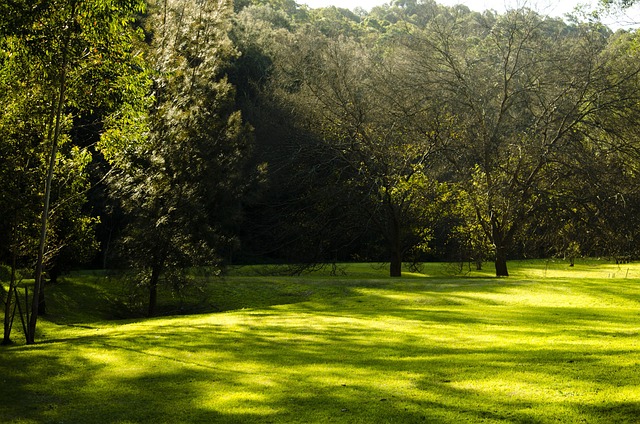Tree trimming and pruning are essential services for lawn care and landscaping, promoting tree health, structure, and aesthetic appeal by removing dead or diseased branches. Techniques vary based on tree type and desired outcome, such as thinning for better light access in mature trees. Regular maintenance enhances outdoor spaces' vibrancy, prevents pest infestations, and boosts a property's value through increased curb appeal. Professional services utilize proper tools and seasonal assessments to ensure proactive, effective tree care.
Tree trimming and pruning are essential aspects of lawn care and landscaping, promoting tree health and enhancing outdoor aesthetics. This article guides you through the art of maintaining your trees effectively. We’ll explore the benefits and various techniques involved in tree trimming and pruning, highlighting how professionals can ensure optimal results. Additionally, we provide practical tips for homeowners to safely trim their trees, ensuring a beautiful and well-maintained landscape. Discover the key practices for a lush, vibrant outdoor space.
- Understanding Tree Trimming and Pruning: Benefits and Techniques
- The Role of Professional Lawn Care and Landscaping in Effective Tree Maintenance
- Tips for Homeowners: When and How to Trim Your Trees Safely
Understanding Tree Trimming and Pruning: Benefits and Techniques

Tree trimming and pruning are essential services in lawn care and landscaping, offering numerous benefits for both the trees and your outdoor space. These practices involve selectively removing dead, diseased, or damaged branches to improve a tree’s health, structure, and appearance. Pruning encourages new growth, increases sunlight penetration, and promotes better air circulation, which can help prevent pest infestations and diseases that may weaken or even kill the tree over time.
Proper trimming techniques vary depending on the type of tree and the desired outcome. For instance, thinning involves removing branches to reduce density, allowing light and air to reach the interior of the canopy. This is particularly beneficial for large, mature trees in landscapes where maintaining a clear view or access is important. Thinning should be done strategically to preserve the tree’s natural shape while ensuring long-term health. Regularly scheduled trimming and pruning not only enhance the aesthetic appeal of your property but also contribute to the overall well-being of your trees, making them more resistant to environmental stressors and ensuring a vibrant, healthy lawn care and landscaping experience.
The Role of Professional Lawn Care and Landscaping in Effective Tree Maintenance

Professional lawn care and landscaping services play a pivotal role in ensuring effective tree maintenance. These experts are equipped with the knowledge and tools to properly trim and prune trees, promoting their overall health and longevity. Regular maintenance by skilled professionals can prevent common issues like diseased branches, weak structures, and safety hazards that may arise from neglect.
By employing techniques such as selective pruning, thinning, and trimming, lawn care specialists enhance a tree’s natural shape, improve its aesthetic appeal, and boost its ability to withstand environmental stressors. Moreover, these services often include seasonal assessments, allowing for proactive care that addresses specific needs at different times of the year. This holistic approach to lawn care and landscaping not only keeps trees vibrant but also contributes to the overall beauty and value of a property.
Tips for Homeowners: When and How to Trim Your Trees Safely

Keeping your trees healthy and well-maintained is an essential part of lawn care and landscaping. Trimming and pruning are crucial techniques to ensure your trees remain robust and aesthetically pleasing. The timing and method of tree trimming are critical; performing it at the right time allows for optimal growth and prevents potential damage.
Homeowners should aim to trim their trees during their dormant period, typically in late winter or early spring before new growth begins. This is because pruning during active growth can cause excessive bleeding and damage. Using sharp, clean tools is vital; dull blades can crush branches, leading to rot. Always consider the tree’s natural shape when trimming, maintaining its overall health and structure. Regular, careful maintenance will foster a vibrant and healthy landscape, enhancing your home’s curb appeal.
Tree trimming and pruning are essential practices for maintaining healthy and vibrant landscapes. By understanding the benefits and employing proper techniques, both professionals and homeowners can enhance the beauty and safety of their outdoor spaces. Incorporating regular lawn care and landscaping services ensures optimal tree care, while following safe guidelines enables anyone to effectively trim trees at the right time. These practices contribute to a lush, well-maintained environment that enhances property values and creates inviting outdoor areas for all to enjoy.
